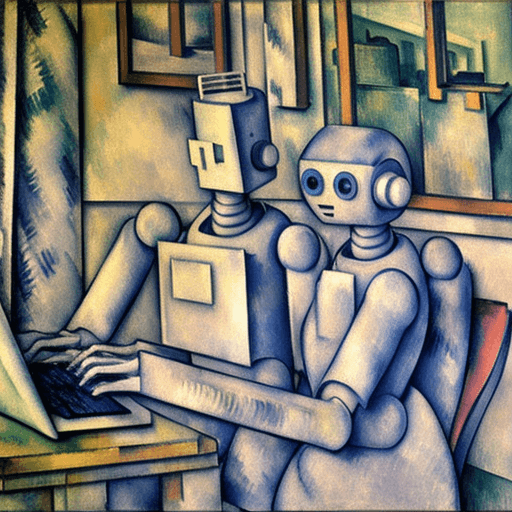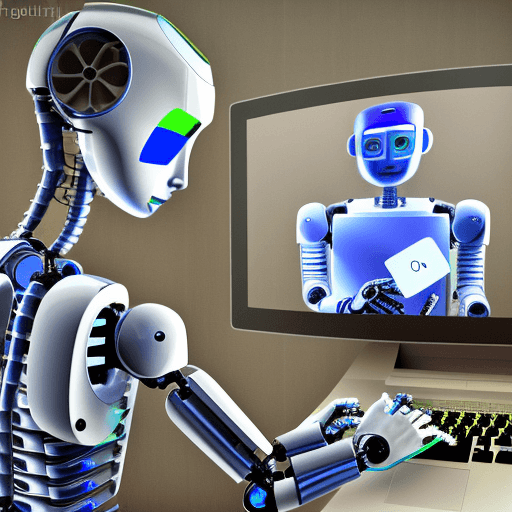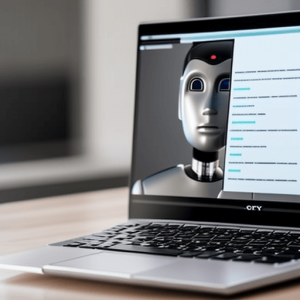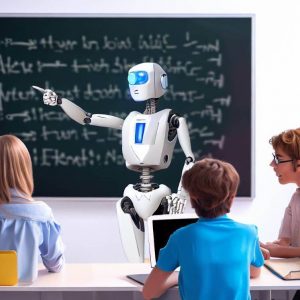Welcome to our article on chatbots and text generators! In this piece, we will explore the history and evolution of these technologies, how they work, and their various applications.
What are Chatbots
Chatbots are computer programs designed to simulate conversation with human users, particularly over the Internet. They can be found in a variety of contexts, including customer service, marketing, banking, healthcare, and education. Chatbots use natural language processing (NLP) to understand and respond to user input, and they can be implemented using either rule-based systems or machine learning-based systems.
Text generators, on the other hand, are software programs that automatically produce written or spoken language. They can be used for tasks such as content generation, machine translation, and summarization. Text generators also rely on NLP techniques, and they can be implemented using either language model-based approaches or rule-based approaches.
In this article, we will delve into the details of how chatbots and text generators work, the different types and applications of each, and the ethical considerations surrounding their use. We hope that by the end of this article, you will have a better understanding of these exciting and rapidly-evolving technologies.

History of Chatbots
The history of chatbots dates back to the 1960s, when ELIZA, one of the first chatbots, was developed by Joseph Weizenbaum at MIT. ELIZA was designed to simulate conversation with a therapist using a simple rule-based system. While ELIZA was a groundbreaking achievement at the time, it was limited in its capabilities and could only handle simple tasks.
As the Internet became more prevalent in the 1990s, chatbots began to be used more widely for customer service and other purposes. These early chatbots were still limited in their capabilities, but they represented an important step forward in the evolution of these technologies.
In the 2000s, advances in natural language processing (NLP) and machine learning techniques enabled chatbots to become more sophisticated and able to handle more complex tasks. Today, chatbots are used in a variety of contexts, including customer service, marketing, banking, healthcare, and education. They are implemented using a range of techniques, including rule-based systems and machine learning-based systems.
Text generators also have a long history, but like chatbots, their capabilities have improved significantly with advances in NLP and machine learning. Today, text generators are used in a variety of applications, including content generation, machine translation, and summarization. They can be implemented using either language model-based approaches or rule-based approaches.
Chatbot Architectures
As mentioned previously, there are two main approaches to implementing chatbots using natural language processing (NLP): rule-based systems and machine learning-based systems.
Rule-based systems
Rule-based systems use a set of pre-defined rules to interpret and respond to user input. These rules can be based on keyword matching, pattern matching, or other techniques. Rule-based systems are relatively simple to implement and can handle basic tasks, but they are limited in their capabilities and cannot handle more complex tasks or adapt to changing inputs.
Machine learning-based systems
Machine learning-based systems, on the other hand, use algorithms and statistical models to learn from data and adapt to changing inputs. These systems are more flexible and can handle more complex tasks, but they require a large amount of training data and are more difficult to implement.
There are several different types of machine learning-based chatbot architectures, including:
- Retrieval-based models: These models use pre-defined responses and select the most appropriate response based on the user input.
- Generative models: These models generate responses from scratch using a sequence-to-sequence model.
- Hybrid models: These models combine retrieval-based and generative approaches to achieve the best of both worlds.

Benefits and Limitations of Chatbots
Chatbots have a number of benefits, including:
- Improved efficiency: Chatbots can handle a large volume of queries and requests, freeing up human employees to focus on more complex tasks.
- 24/7 availability: Chatbots can operate around the clock, providing customer service and other support even when human staff are not available.
- Personalization: Chatbots can use data about the user to provide personalized recommendations and recommendations.
- Cost-effectiveness: Chatbots can reduce labor costs and increase efficiency, leading to cost savings for businesses.
However, chatbots also have limitations, including:
- Limited understanding: Chatbots are limited by their programming and may not be able to understand or respond to complex or unusual queries.
- Lack of empathy: Chatbots may not be able to provide the same level of emotional support or empathy as a human.
- Bias: Chatbots may incorporate bias from their training data or the humans who programmed them.
- Limited adaptability: While machine learning-based chatbots can adapt to some extent, they are still limited in their ability to handle complex or unusual situations.
Types and Applications of Chatbots
There are many different types of chatbots, each with its own unique applications and capabilities.
Some examples of the types of chatbots include:
- Customer service chatbots: These chatbots are designed to assist customers with tasks such as answering questions, solving problems, and providing information. They can be used to handle a large volume of customer queries, freeing up human staff to focus on more complex tasks.
- Marketing chatbots: These chatbots are used for tasks such as lead generation, customer segmentation, and personalized recommendations. They can be used to improve the customer experience and increase sales.
- Banking chatbots: These chatbots are used in the banking industry to assist customers with tasks such as checking account balances, making payments, and tracking expenses. They can help banks reduce labor costs and improve efficiency.
- Healthcare chatbots: These chatbots are used in the healthcare industry to assist patients with tasks such as booking appointments, providing information about conditions and treatments, and reminding patients to take medications. They can help healthcare providers reduce workload and improve patient outcomes.
- Education chatbots: These chatbots are used in the education sector to assist students with tasks such as answering questions, providing personalized recommendations, and tracking progress. They can help educators reduce workload and improve student outcomes.
Examples of Chatbot Tools:
- Chatbot Pro
- ChatSonic
What are AI Text Generators
AI Text generators are software programs that automatically produce written or spoken language. They can be used for tasks such as content generation, machine translation, and summarization. Text generators rely on natural language processing (NLP) techniques to understand and generate language.
There are two main approaches to implementing AI text generators: language model-based generators and rule-based generators.
Language model-based generators
Language model-based generators use statistical models to predict the likelihood of a sequence of words occurring. These models are trained on large amounts of text data and can generate human-like language. Language model-based generators are flexible and can handle a wide range of tasks, but they require a large amount of training data and can be difficult to implement.
Rule-based generators
Rule-based generators, on the other hand, use a set of pre-defined rules to generate text. These rules can be based on keyword matching, pattern matching, or other techniques. Rule-based generators are relatively simple to implement and can handle basic tasks, but they are limited in their capabilities and cannot handle more complex tasks or adapt to changing inputs.
Text generators have a number of applications, including:
- Content generation: Text generators can be used to generate articles, social media posts, and other written content.
- Machine translation: Text generators can be used to translate text from one language to another.
- Summarization: Text generators can be used to generate summaries of long documents or articles.
Examples of AI Text Generation Tools
- Writesonic
- Copy.ai
- Moonbeam
- Quillbot
- Andi
- Copymatic
- CopyMonkey
- Notion AI
Ethical Considerations on Using Chatbots and AI Text Generators
The use of chatbots and text generators raises a number of ethical considerations, including:
- Bias: Chatbots and text generators can incorporate bias from their training data or the humans who programmed them. This can lead to biased outputs and perpetuate existing societal biases.
- Automation of jobs: The increasing use of chatbots and text generators could lead to the automation of certain jobs, potentially leading to job loss and economic disruption.
- Lack of transparency: Chatbots and text generators may not be transparent in their decision-making processes, making it difficult to understand how they arrived at certain outputs.
- Lack of accountability: Chatbots and text generators may not be held accountable for their actions or outputs in the same way that humans are.
It is important to consider these ethical considerations when developing and using chatbots and text generators. It may be necessary to put measures in place to mitigate potential negative impacts and ensure that these technologies are used responsibly.
Conclusion
We have explored the history and evolution of chatbots and text generators, how they work, and their various applications. We have also discussed the ethical considerations surrounding their use.
Chatbots are computer programs designed to simulate conversation with human users, especially over the Internet. They use natural language processing (NLP) to understand and respond to user input, and they can be implemented using either rule-based systems or machine learning-based systems. Chatbots have a number of benefits, including improved efficiency, 24/7 availability, personalization, and cost-effectiveness. However, they also have limitations, including limited understanding, lack of empathy, potential for bias, and limited adaptability.
Text generators are software programs that automatically produce written or spoken language. They can be used for tasks such as content generation, machine translation, and summarization. Text generators rely on NLP techniques and can be implemented using either language model-based approaches or rule-based approaches.
There are a number of ethical considerations to consider when developing and using chatbots and text generators, including bias, automation of jobs, lack of transparency, and lack of accountability.
Looking to the future, it is likely that chatbots and text generators will continue to evolve and be used in an increasing number of contexts. It will be important to continue to consider the ethical implications of these technologies and ensure that they are used responsibly.




